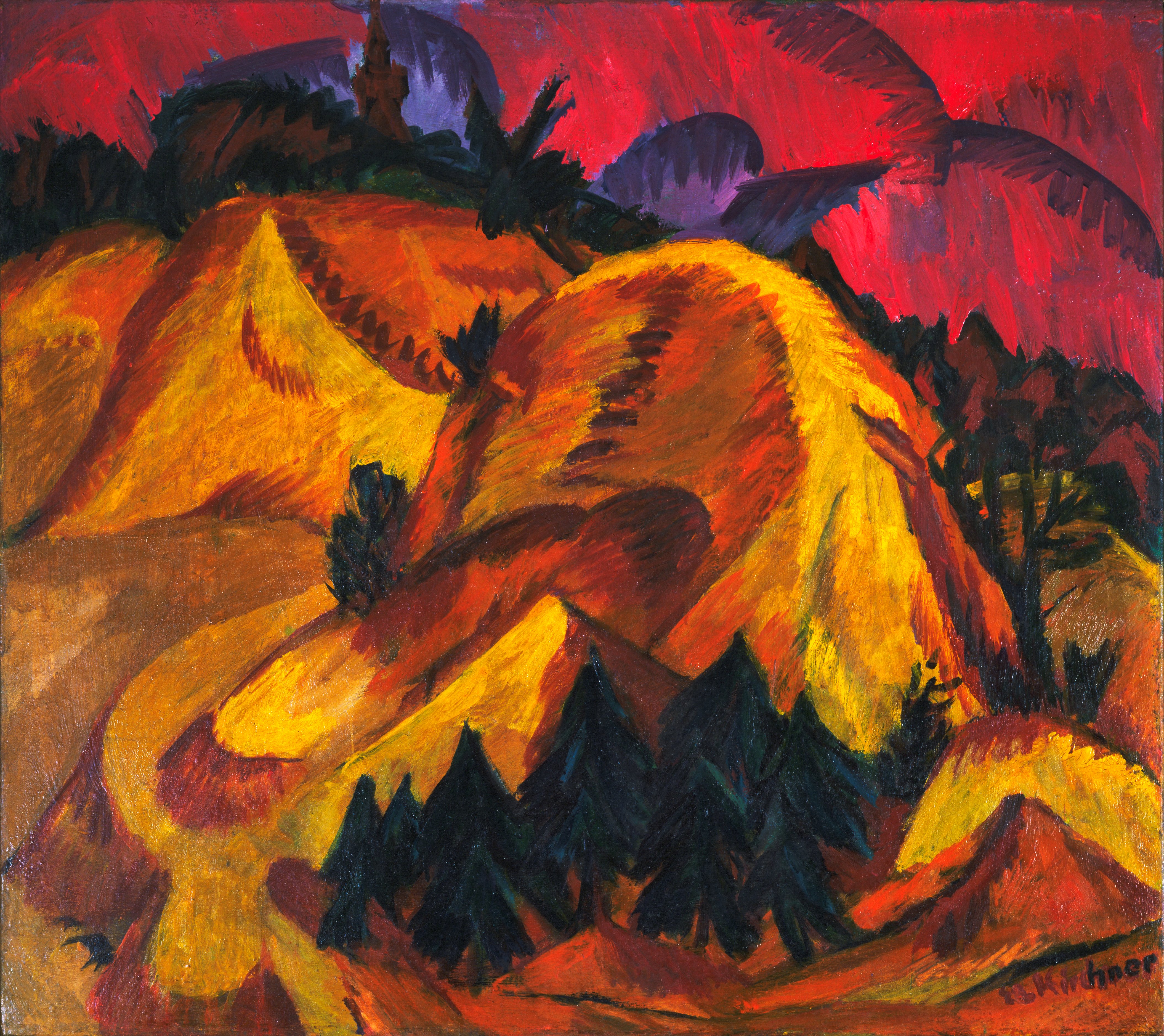NEW YORK CITY — The Museum of Modern Art and the heirs of German art collector Max Fischer have announced that they have reached an agreement for the restitution of a German Expressionist painting by Ernst Kirchner. The painting, “Sand Hills (Bei Gruenau),” was inherited by Fischer from his parents, Ludwig and Rosy Fischer, in 1926, and has been known in MoMA’s collection as “Sand Hills in Engadine,” 1917–18.

This Ernst Ludwig Kirchner oil on canvas painting was known in MoMA’s collection as “Sand Hills in Engadine,” 1917–18. MoMA’s provenance team correctly identified the location of the landscape as the Muggel hills in Gruenau, a suburb of Berlin.
Following inquiry by the family through their attorney, David Rowland, and working in close collaboration with them, MoMA conducted an extensive, multiyear research effort into the history of the painting. Documentation shows that the painting was in Fischer’s collection until at least early 1933 and was acquired in Germany by art collector Kurt Feldhäusser in 1938. By that time, Fischer had emigrated to the United States from Nazi Germany, leaving some works in his collection behind.
Feldhäusser, a collector of modern German art and a former curator, was killed in a bombing in Germany in 1945. The painting was consigned by his mother to the Weyhe Gallery in New York City that year, and MoMA acquired it from the gallery under the title “Dunes at Fehmarn” in 1949. The title was later changed to “Sand Hills in Engadine” in consultation with the Kirchner scholar Donald Gordon.
MoMA’s research revealed three essential findings that led the museum to determine that the painting should be returned to the family: the paintings “Sand Hills (Bei Gruenau)” and “Sand Hills in Engadine” are one and the same; the painting had remained in Germany during the Nazi period; and Max Fischer likely did not have full knowledge of or choice regarding the sale of the work nor received its proceeds.
MoMA Director Glenn D. Lowry said: “Provenance research is an important and ongoing practice at MoMA. We are grateful to the Fischer family and to David Rowland for their collaboration, and are pleased that the painting will be restituted to the heirs of Max Fischer.”
“The Ludwig and Rosy Fischer collection was one of the most important collections of Expressionist art assembled in Germany prior to the onslaught of the Nazi era. Max Fischer and his brother Ernst inherited this incredible collection, but Max Fischer lost a good part of this inheritance when he fled Germany in 1935,” said Rowland. “MoMA’s professional handling of this matter, cooperation in sharing research, analysis of complex historical information, and ultimate restitution of this Kirchner artwork is an example of museum best practices in the handling of Nazi-era art claims. The heirs of Max Fischer are grateful to MoMA for their return of this important artwork.”
The museum is at 11 West 53rd Street. For information, www.moma.org or 212-708-9431.

